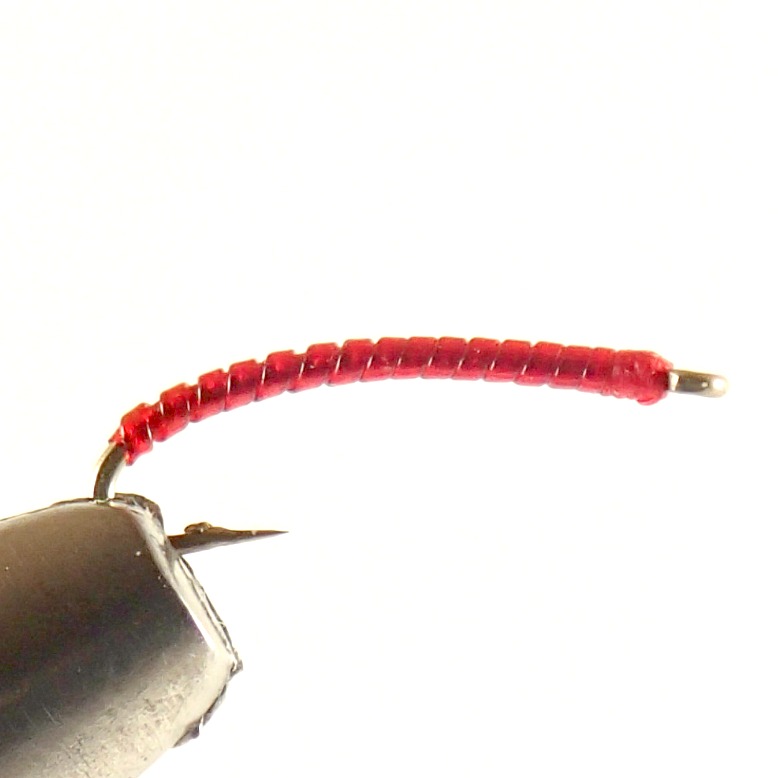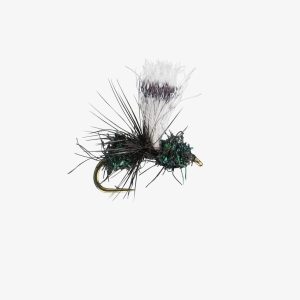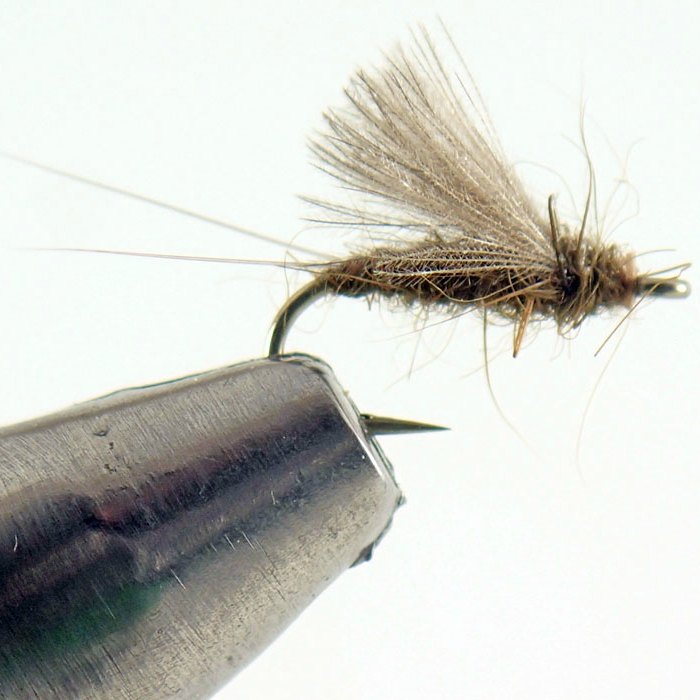Real-Time Data
Fishing Info
- Rainbow
- Brown
- Midges
- Small Mayflies
- Annelids
- Leeches
- Scuds
- Midge Pupa
- WD-40
- Annelids
- RS-2
- Parachute Adams
- Comparadun
- Sparkle Dun
- San Juan Worm
All Year
From Navajo Dam to HWY 173 bridge
Special trout waters flies & lures catch & release from Dam downstream 3 3/4 miles
Only 60 miles south of Durango, the world-class tailwater fishery on the San Juan River below Navajo Dam is easily accessible to southern Colorado fly fishers. After heading in the mountains surrounding Wolf Creek Pass and flowing through Pagosa Springs, the San Juan flows into Navajo Reservoir. Outflow from the dam is from the bottom of the lake, a situation that puts a constant flow of cold water into the river below, creating a marvelous trout stream.
In contrast to most of the mountain fishing in Colorado, the San Juan in New Mexico flows through the high desert. About 20 miles of the San Juan are a viable trout fishery, and of this, only 5 miles have easy access and are regularly fished. The situation gives the San Juan another contrast to mountain fishing: lots of anglers, especially on the weekends. If you are looking for solitude, this section of the San Juan is not for you. But if you are looking for the chance for easy access to large rainbows, the San Juan is hard to beat.
To enhance the quality of fishing on the San Juan, New Mexico Department of Game and Fish has special regulations in place for the water below the dam. The first 3 3/4miles below the dam is fly and lure, barbless hook, catch-and-release water and is known as the Quality Water. Angling is limited to artificial flies and lures with single barbless hooks.
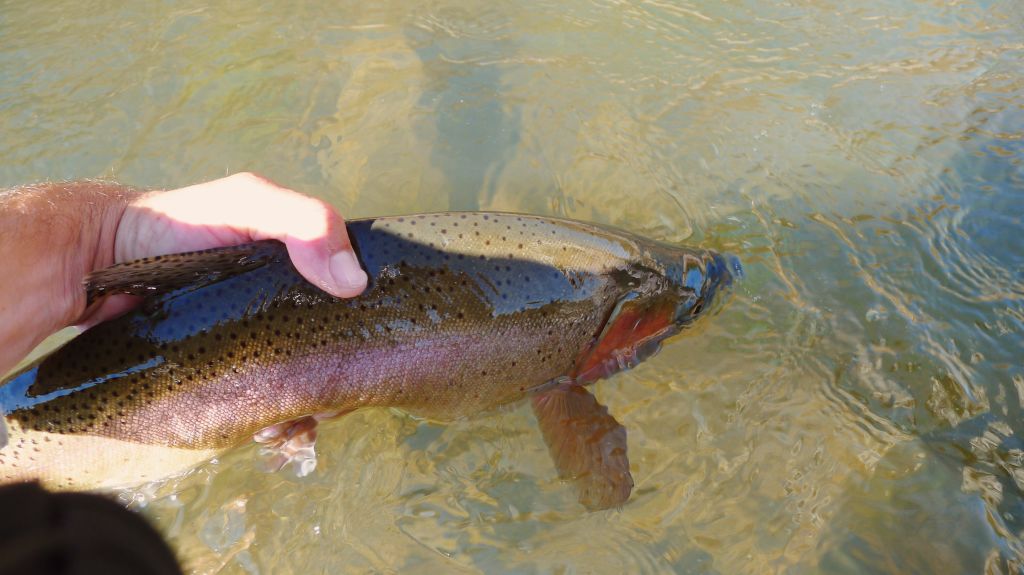 Below Navajo Dam the San Juan is a large low-gradient river over 100 feet wide. The river flows through a shallow canyon with scattered vegetation on the canyon floor, like a spring creek in the desert. Willows are common along the banks and in the islands of the river. The stream is often channelized in shallow stretches, but deep runs are found almost everywhere. The flow ranges from 250 cubic feet per second (cfs) to 5000 cfs, with optimum amounts from 500 to 1000 cfs. High spring flows can vary depending on mountain snowpack and reservoir conditions. Seasonal fluctuations are to be expected, but flows do not normally change on a daily basis as in many tailwaters.
Below Navajo Dam the San Juan is a large low-gradient river over 100 feet wide. The river flows through a shallow canyon with scattered vegetation on the canyon floor, like a spring creek in the desert. Willows are common along the banks and in the islands of the river. The stream is often channelized in shallow stretches, but deep runs are found almost everywhere. The flow ranges from 250 cubic feet per second (cfs) to 5000 cfs, with optimum amounts from 500 to 1000 cfs. High spring flows can vary depending on mountain snowpack and reservoir conditions. Seasonal fluctuations are to be expected, but flows do not normally change on a daily basis as in many tailwaters.
Cold water temperatures require the angler to dress warm, particularly from the waist down. Fleece pants and wool socks are a must, especially under today’s breathable waders.
Many first-time visitors to the San Juan find it easier to fish the river with an experienced guide. Both wade and float trips are available.
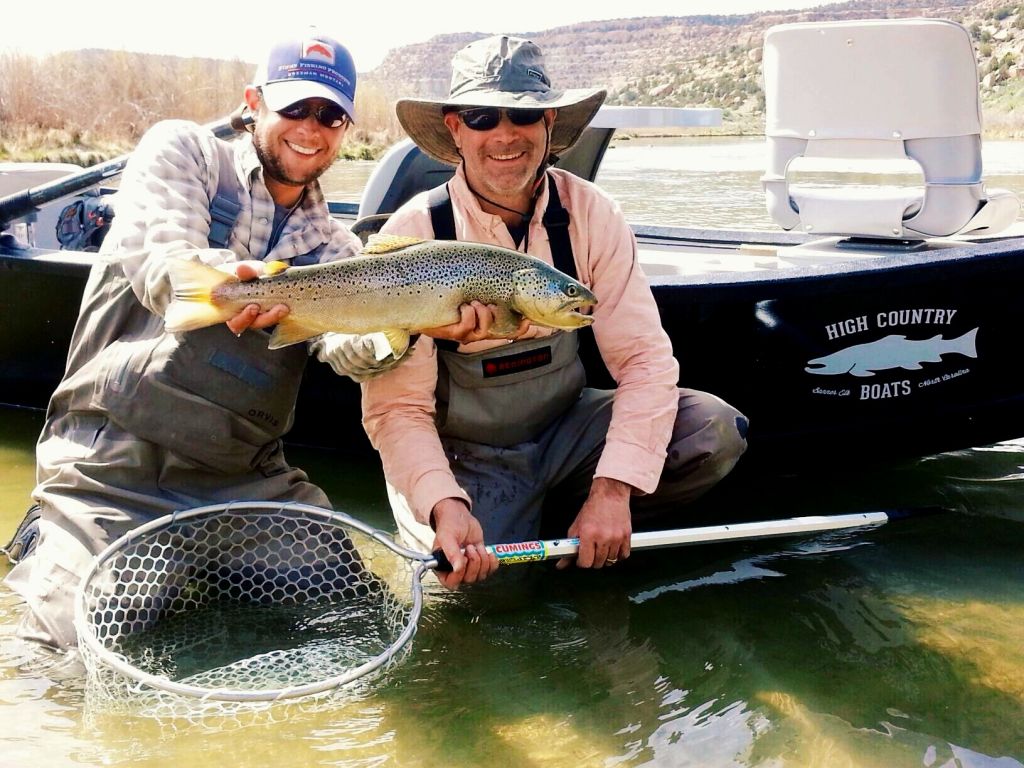 Near-constant flows and water temperatures create conditions on the San Juan that are quite different from nearby mountain streams. Trout are careful, selective feeders. Successful anglers come to the river prepared to match the size and color of the dominant food source for that day. Fortunately, only a limited number of insect species are found on the river.
Near-constant flows and water temperatures create conditions on the San Juan that are quite different from nearby mountain streams. Trout are careful, selective feeders. Successful anglers come to the river prepared to match the size and color of the dominant food source for that day. Fortunately, only a limited number of insect species are found on the river.
Angling the San Juan is always a challenge. Presentations must be exact and drifts must be drag-free. The complex nature of San Juan fly fishing cannot be easily summarized in a few words. What follows is only an outline of the conditions and requirements of fly fishing this complex stretch of water.
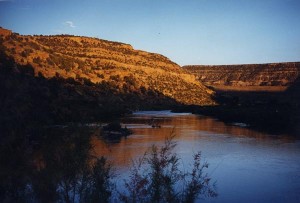 Abundant midge hatches occur year-round, making midges the most important food source on the river. Fish feed on adult and immature insects as well as on mating clusters of insects. Midge larva and pupa patterns ranging from size 18 to 28 should be fished dead drift at varying depths, including just below the surface. Dry-fly fishing with adult midge patterns can be effective, but if conditions are right, fishing midge cluster patterns may be more productive. Midge cluster flies are often simple black-thread bodies with a grizzly hackle tied parachute-style on a white post clipped short in sizes 14 or 16. When fish are freely rising to clusters, this type of pattern can make your day.
Abundant midge hatches occur year-round, making midges the most important food source on the river. Fish feed on adult and immature insects as well as on mating clusters of insects. Midge larva and pupa patterns ranging from size 18 to 28 should be fished dead drift at varying depths, including just below the surface. Dry-fly fishing with adult midge patterns can be effective, but if conditions are right, fishing midge cluster patterns may be more productive. Midge cluster flies are often simple black-thread bodies with a grizzly hackle tied parachute-style on a white post clipped short in sizes 14 or 16. When fish are freely rising to clusters, this type of pattern can make your day.
Mayflies are found in riffles and on the flats below the riffles. Spring and fall hatches of blue-winged olives provide some excellent dry-fly fishing, especially on calm cloudy afternoons. Trout will rise to size 18 or 20 Blue-Winged Olive patterns. From early July to late September pale morning dun hatches occur in early afternoon. The hatch is often better on sunny days. Fish with size 14 or 16 pale yellow Comparaduns. If the fish are taking emergers below the surface, a variety of rusty, dark PMD emerger patterns should do well.
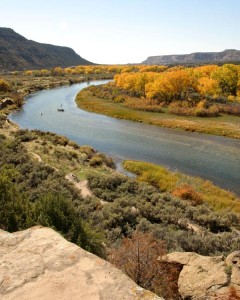 When no insect activity is observed, prospect for trout with subsurface patterns. Red, orange, tan, and brown San Juan Worms are effective year-round. Black or brown rabbit and marabou leeches in large sizes are a good choice in slow-moving water. Egg patterns are also popular on the river.
When no insect activity is observed, prospect for trout with subsurface patterns. Red, orange, tan, and brown San Juan Worms are effective year-round. Black or brown rabbit and marabou leeches in large sizes are a good choice in slow-moving water. Egg patterns are also popular on the river.
You should have no trouble finding fish, for they are everywhere.Adapt your fishing techniques to the location you select. The flats, the channels, the pools, and the riffles all hold plenty of trout.
The San Juan rarely disappoints experienced anglers or those who choose to go with a good guide. Due to the popularity of the river, try to hit the river on weekdays during the peak season of June to October. From November to March the river can be delightful—dress warmly and you’ll have a day like no other on the San Juan.
The Above Information on the San Juan River is excerpted from the book “Fly Fishing Southern Colorado” by Craig Martin, Tom Knopick and John Flick. It is reprinted courtesy of Pruett Publishing Company. All Rights Reserved.
Copyright 1997, 2007 by Craig Martin, Tom Knopick, John Flick



